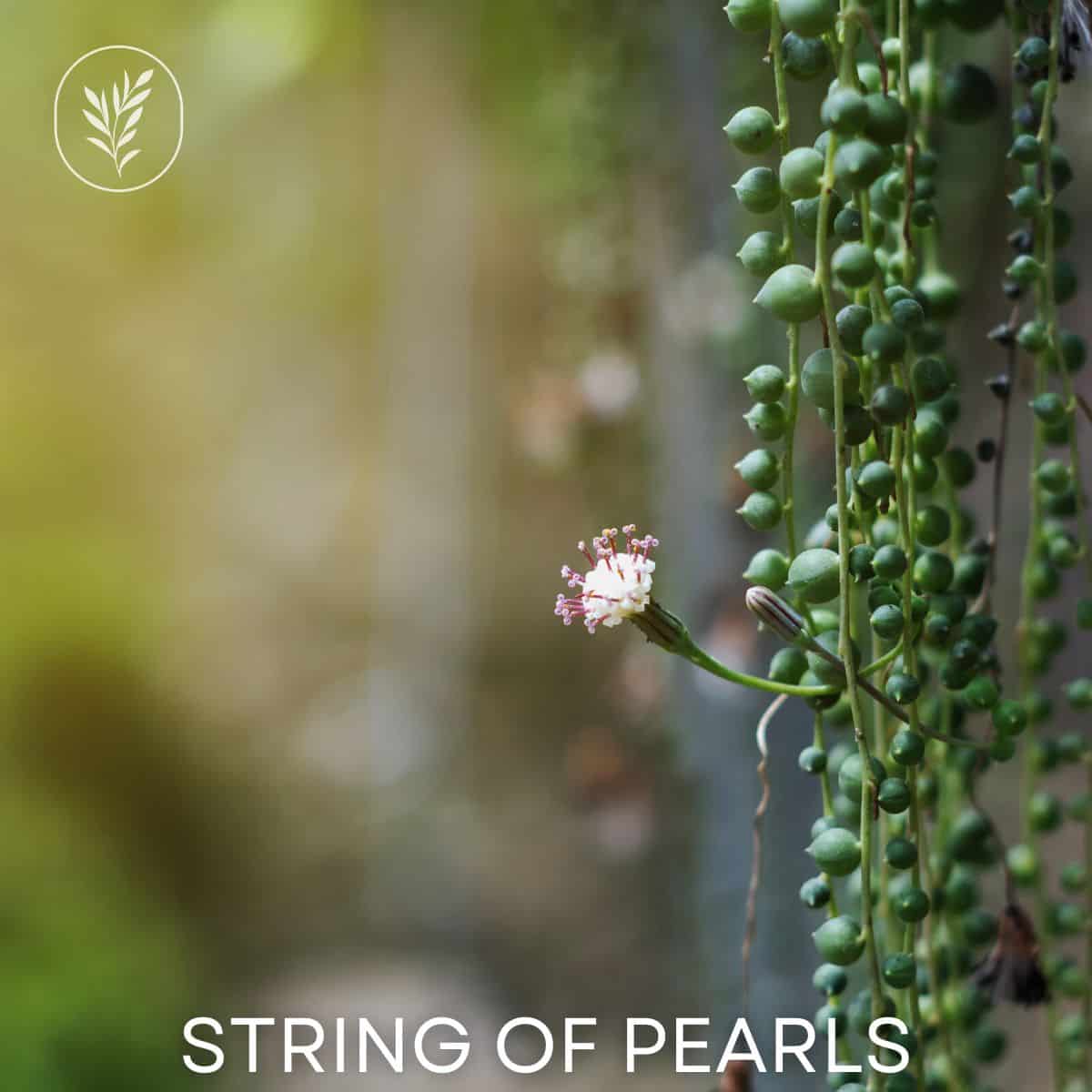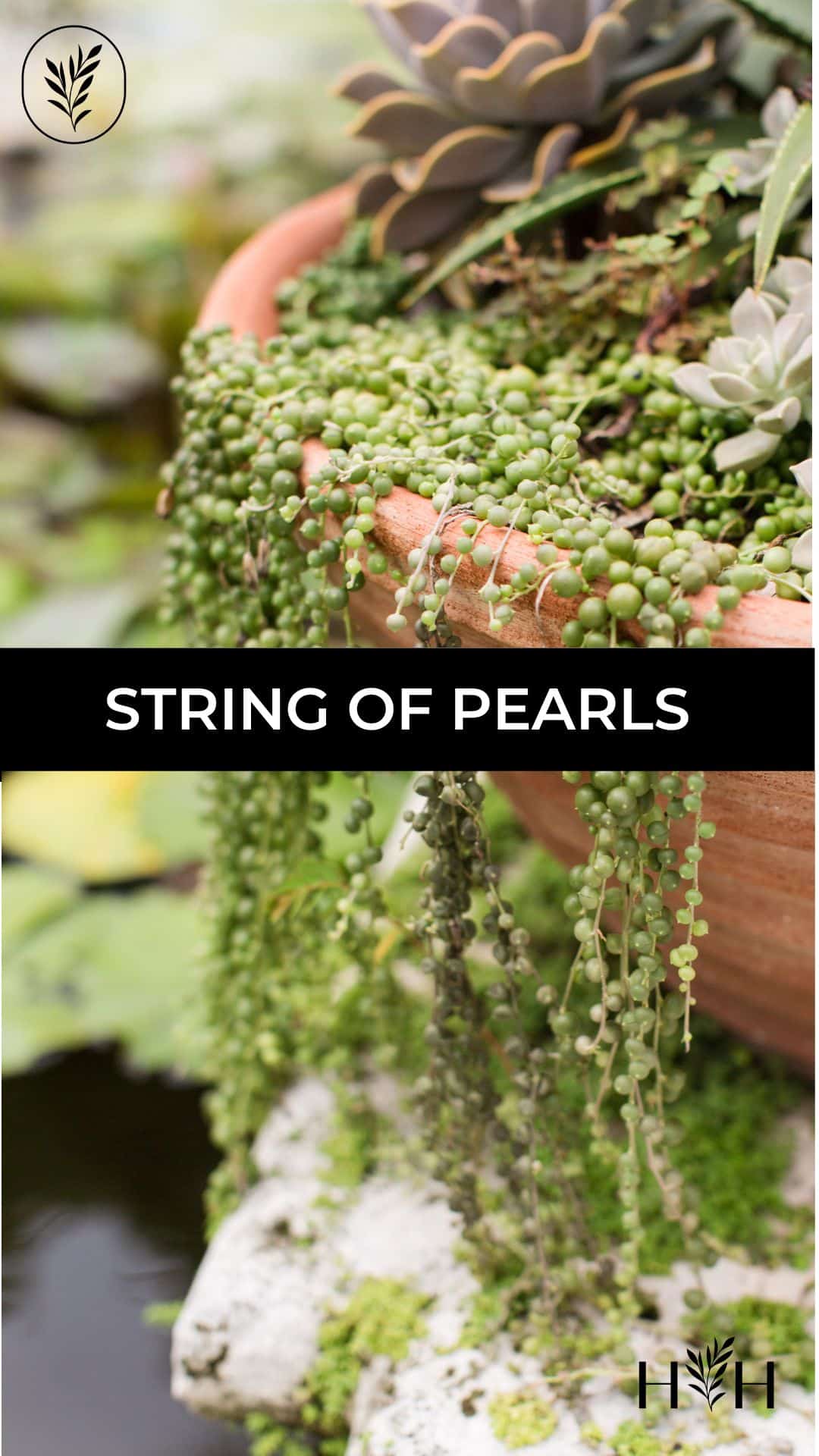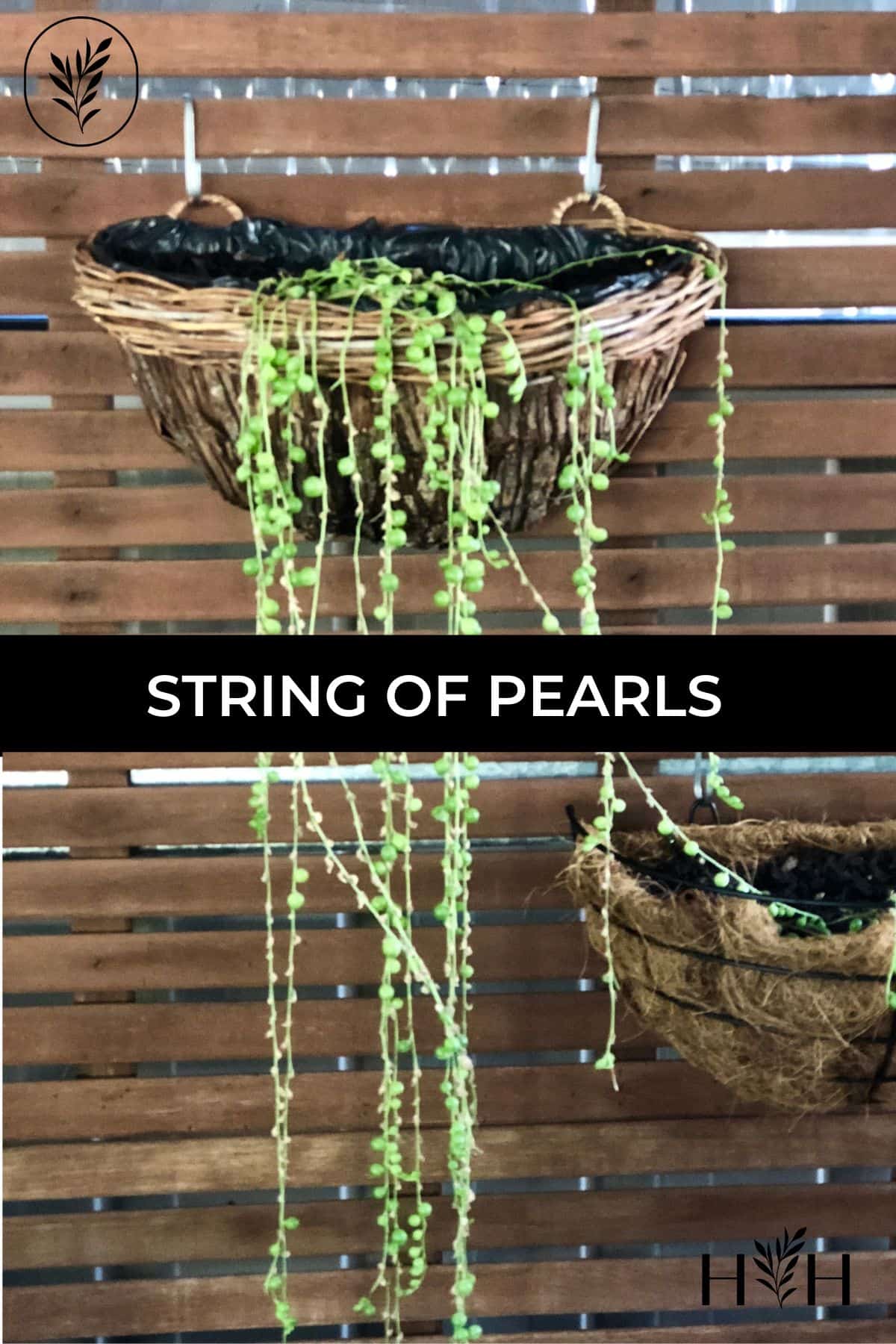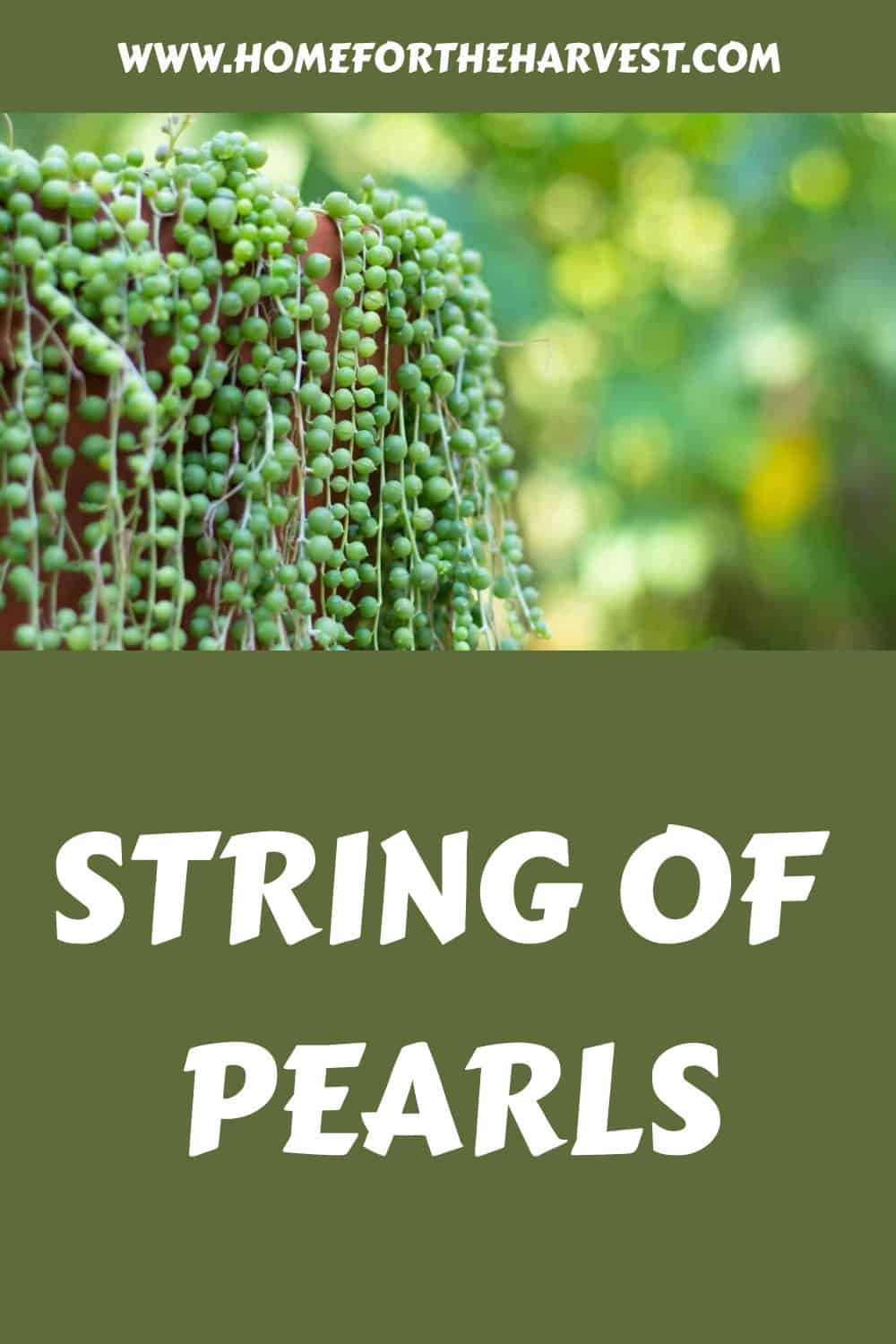Succulents are some of the best houseplants because they are so low-maintenance. Perched near a sunny window or on a coffee table, succulents can last a week or more without water and they’ll remain plump and green. String of Pearls is a gorgeous plant not only adds charm to any space, but it takes hardly any effort to maintain its beauty.
String of Pearls, or Senecio rowleyanus, is a member of the succulent family native to southwest Africa. Like most other succulents, it is a topsoil settling plant that requires low water and moderate light. Some common pests of String of Pearls include aphids, gnats, whiteflies, and ants.
Whether you are a green thumb or a notorious plant killer, there is always more to learn about houseplants, and String of Pearls is one of our favorites. Although relatively easy to care for, this plant can be deceptively finicky if you care for it incorrectly. In this article, we will go over the ins and outs of growing String of Pearls, including light, watering needs, pests, and potting.
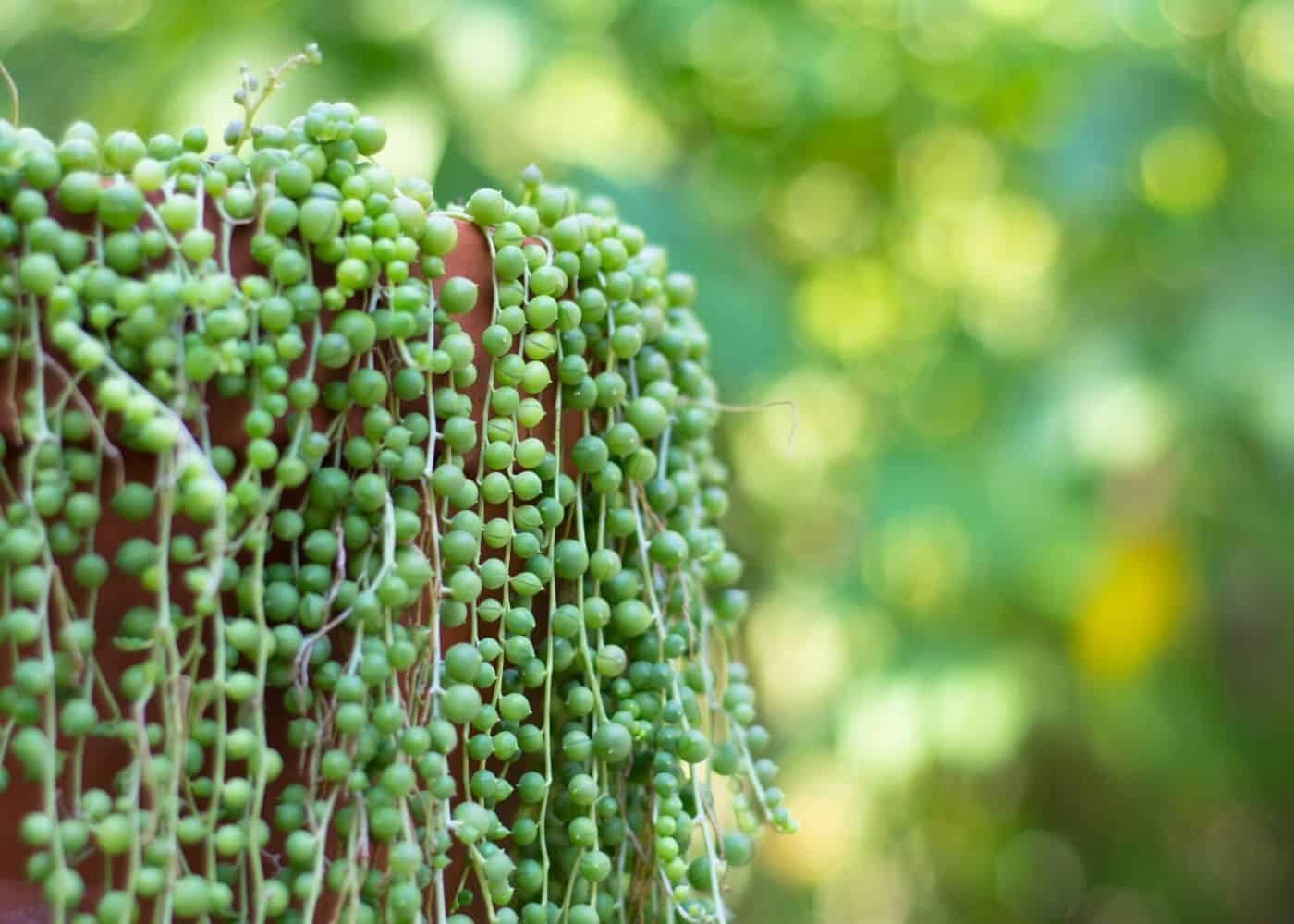
String of Pearls plant basics
String of Pearls is a succulent plant that belongs to the Asteraceae, or daisy family. This plant is made up of a cluster of long vines studded with little pea-like bulbs that resemble pearls. Other common names are “string of beads plant” and “rosary plant.” In winter, String of Pearls blooms with small white flowers which some people say smell like cinnamon.
Some people choose to keep String of Pearls in hanging pots, with the vines tumbling over the side. String of Pearls is perfectly happy with this form of growth. You can also keep the plant on solid ground, and the pearl-covered vines will spill out and begin trailing on the ground.
If you read nothing else about String of Pearls, know that this is a plant that prefers to be left alone (like most succulents). Keep it near a brightly lit window, close enough to be in the range of filtered or shaded light but not so directly that it gets burned. Water it once every two weeks, and you should have a happy plant.
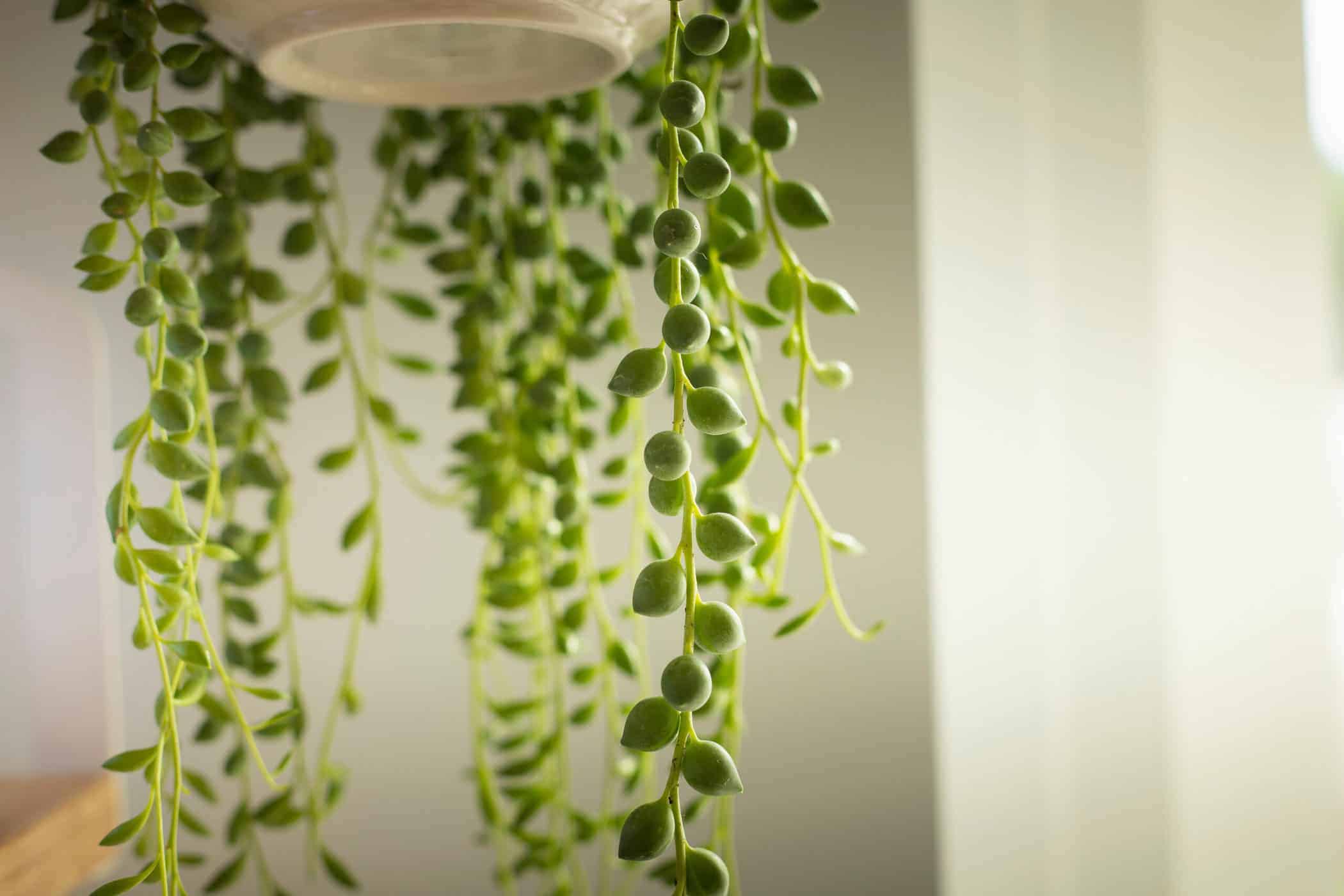
Light and temperature requirements for String of Pearls
Most people grow String of Pearls inside, and in that case, this plant should be close to a window and exposed to partial sunlight. It can handle some direct sunlight but will do better a little bit away from a window as opposed to being pressed against the glass. If you’re growing String of Pearls outside, the plant prefers bright shade or filtered light. Less light will likely cause the plant to grow more slowly, or the growth may cease altogether.
Surprisingly, String of Pearls prefers cooler indoor temperatures that range from 50 to 60 degrees Fahrenheit. However, it can still thrive in temperatures of 70 degrees and above. Try to keep this plant away from drafty areas though, as it likes consistent temperatures. If keeping the plant outside, be sure to bring it in before the first frost, as ice is a sure way to kill it.
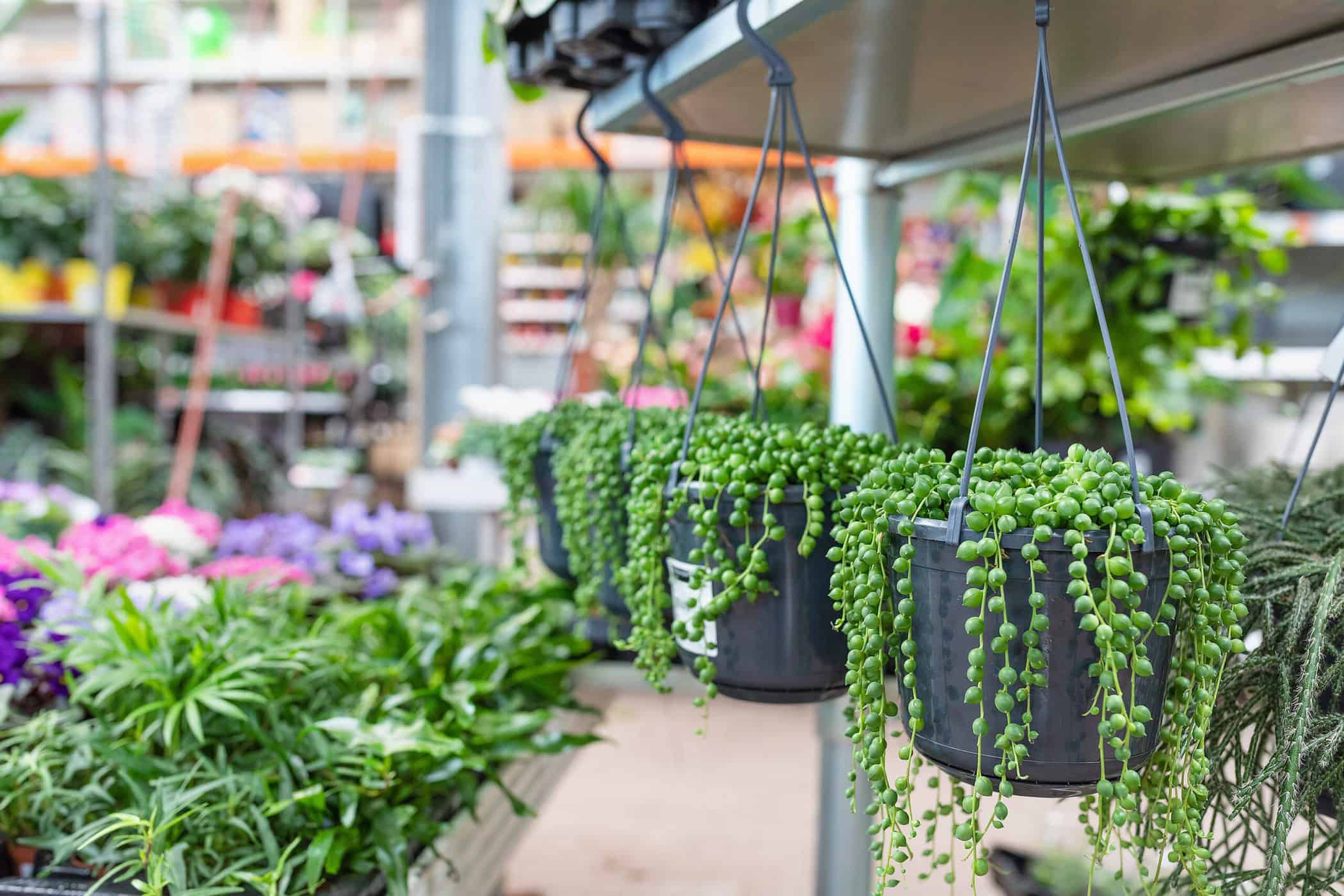
Watering and humidity for String of Pearls plants
Like most other succulents, String of Pearls is very sensitive to too much water. As is expected of a plant native to an arid climate, String of Pearls plants like to be kept fairly dry- the topsoil should be dry to the touch and dry at least half an inch down before watering. Watering every two weeks is a good rule of thumb. During the winter, they need even less, and watering once every three to four weeks will be all they require.
The humidity in most households should be okay for String of Pearls, as in 50% or higher. Don’t go out of your way to increase the humidity in your home, however. While this may be a great choice for other houseplants, String of Pearls will not thank you for giving it too much humidity, which may cause it to rot. In fact, all in all, it prefers drier air.
Pruning String of Pearls
String Of Pearls plants can become leggy in low light conditions and may require pruning. They may also require pruning if the strings grow too long for the growing space due to the trailing habit of the stems.
Start pruning by removing any dead, dying, diseased, or damaged foliage. Then move on to shortening overly long strings. Take care to pick out any bits of dead foliage or dead stems from on top of the potting soil surface. Always use clean, sharp scissors or pruners.
String of Pearls fertilizer
String Of Pearls plants grown indoors require supplemental nutrition as they are grown outside of their natural ecosystem and have no outside source of nutrients. Use an all-around indoor plant food product (liquid or water-soluble tends to act faster, but you have to apply them more often).
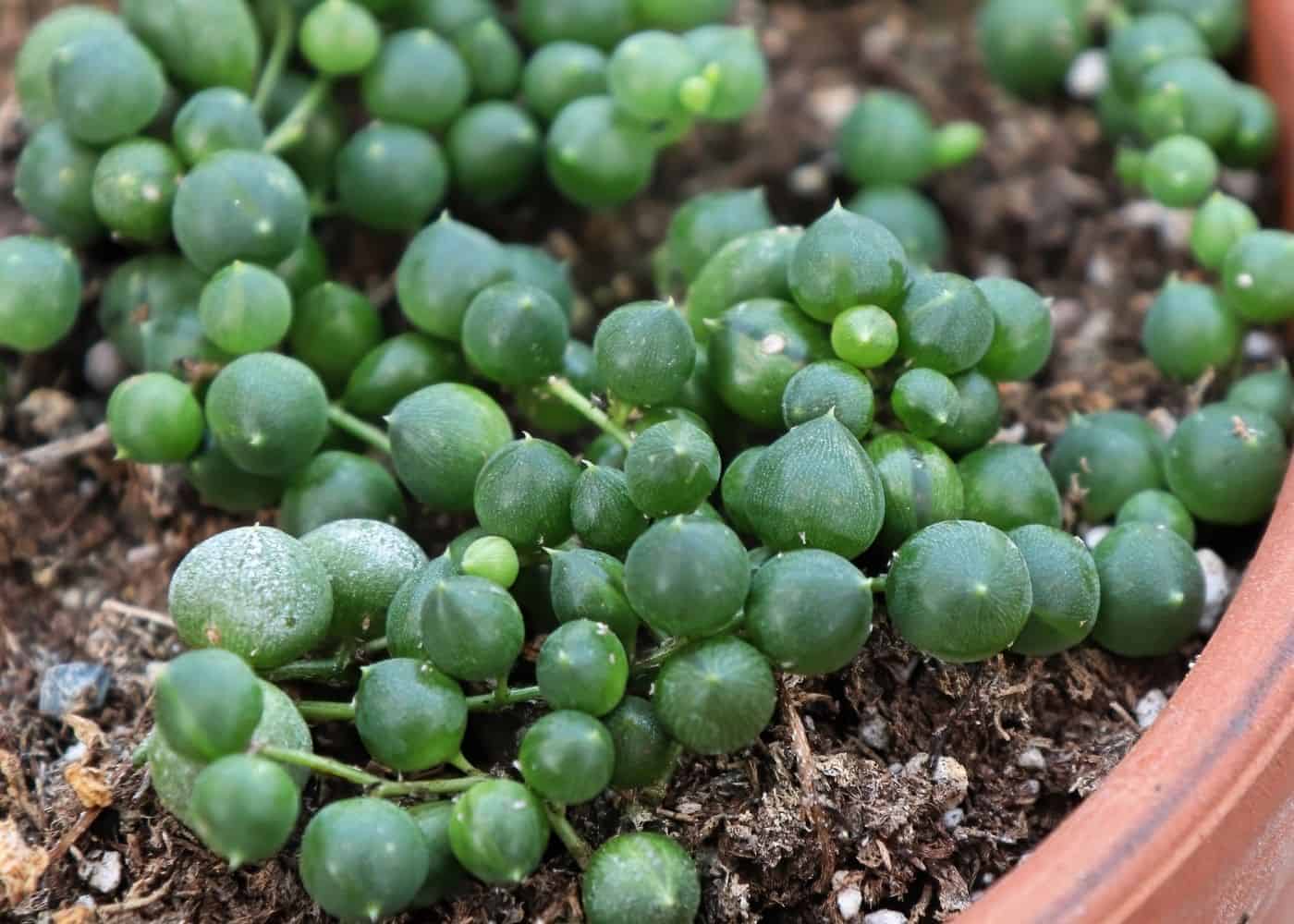
Choosing a planter pot for String of Pearls
Most plants prefer to have a well-draining pot, meaning a pot with small holes at the bottom for excess water to escape, allowing the plant to “breathe.” For String of Pearls, this is also a wise choice. These plants don’t like to sit in water for too long, and a well-draining pot will ensure that excess water doesn’t stick around. Terra cotta pots are a good option as they are breathable and tend to dry out easily.
String of Pearls plants from the garden center often come in small nursery pots. Sometimes these pots can be slipped inside of a decorative planter or basket (especially if the outer planter doesn’t have a drainage hole), but sometimes the plant must be repotted into a larger container. Repotting String of Pearls plants is generally easy as long as the plants are not overwatered or handled too firmly.
Potting mix for String of Pearls plants
String of Pearls is susceptible to root rot, so these plants grow best in slightly sandy soil that does not remain wet for extended periods. These plants also grow well in regular succulent soil mix or even cactus mix. Any soil type labeled “well-draining” or “good drainage” is also fine. Most high-quality succulent soil mixes contain perlite to trap air inside the soil mix.
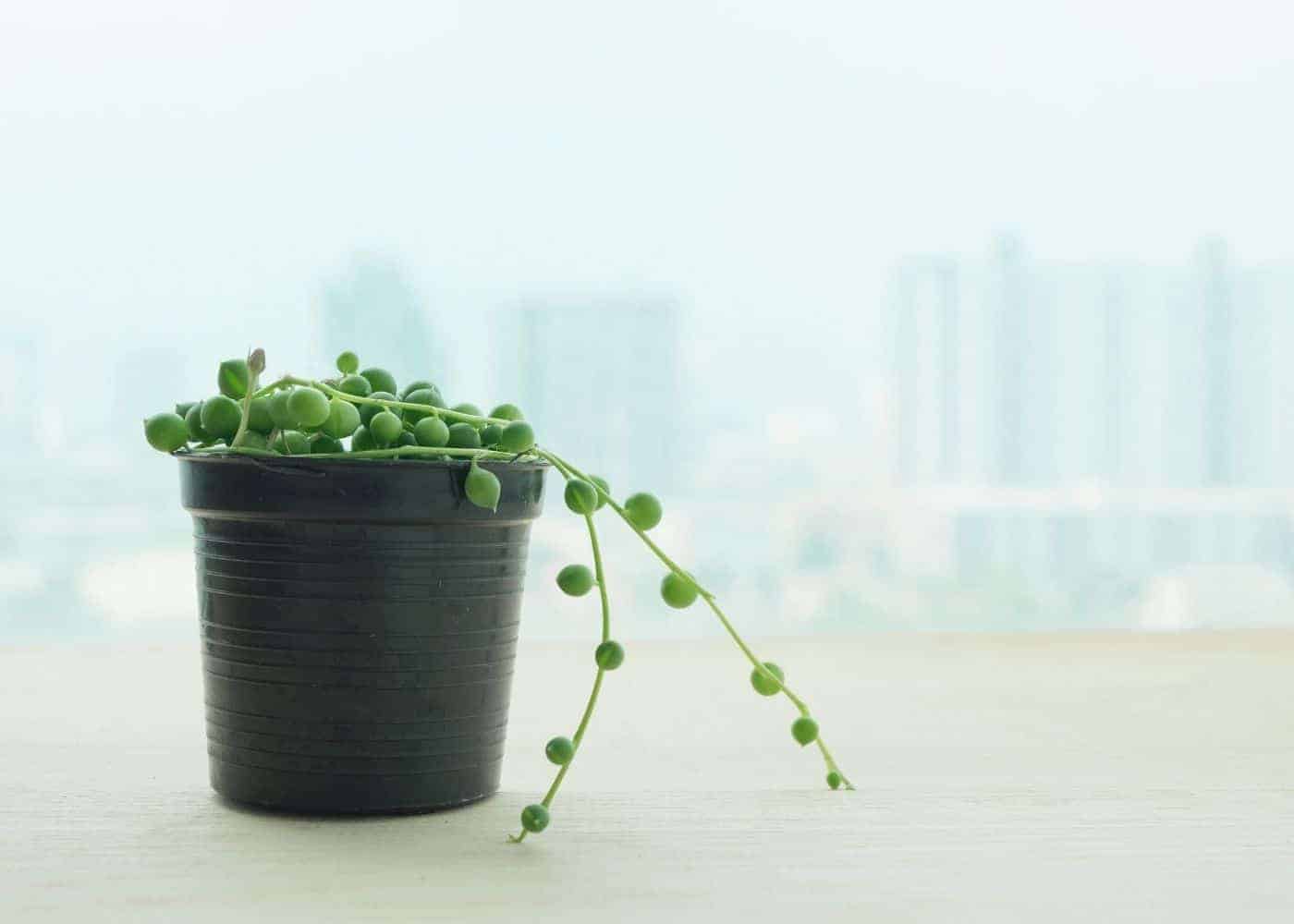
Common pests & diseases growing String of Pearls
As long as you keep your plant in a well-ventilated area and avoid overwatering, String of Pearls is unlikely to attract pests. However, some pests that commonly afflict the plant are aphids, mites, whiteflies, gnats, mealybugs, and ants. Spraying your plant with neem oil or another organic pesticide can help rid you of these pests.
Root rot is the most common disease that affects String of Pearls. It is caused when the roots are either sitting in water or are too moist. This disease can spread through the soil if the plant is not repotted in fresh soil.
Shriveling of the leaves is a common complaint in String of Pearls and can be caused by a number of issues. One major cause is too much sunlight. String of Pearls placed too close to a window or in direct sunlight may burn. Keep them in filtered or shaded light.
Shriveling can also be caused by too little water. Water causes the leaves to swell, and lack of water can make them shrink. Overwatering can also have this same effect, however, so make sure that you are keeping track of how much water you are giving the plant. Tracking it biweekly may be helpful.



